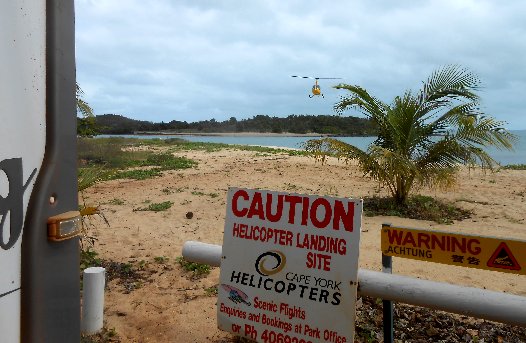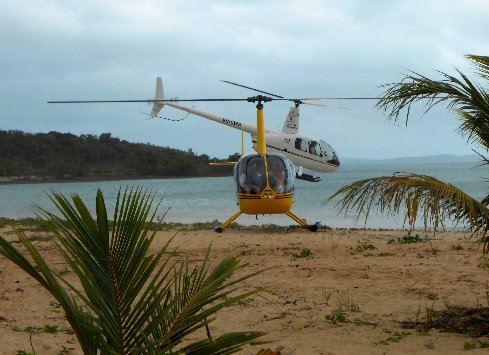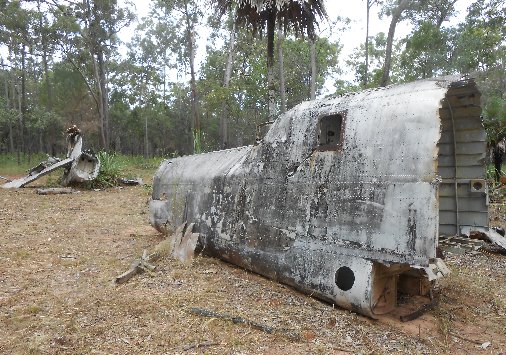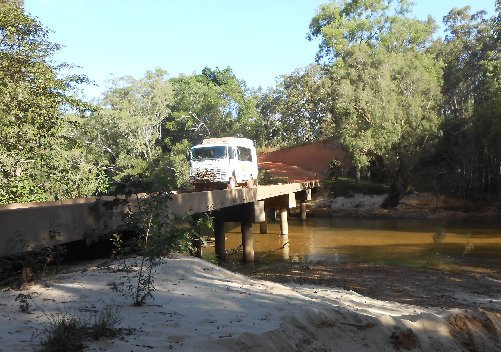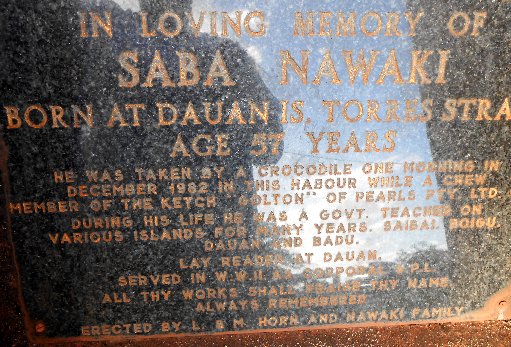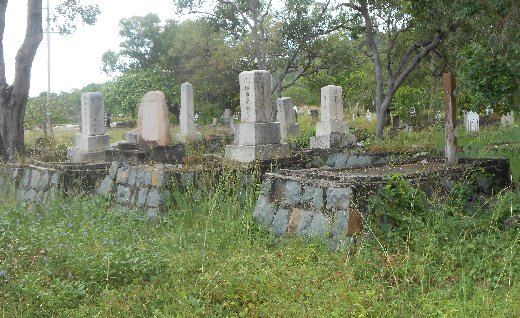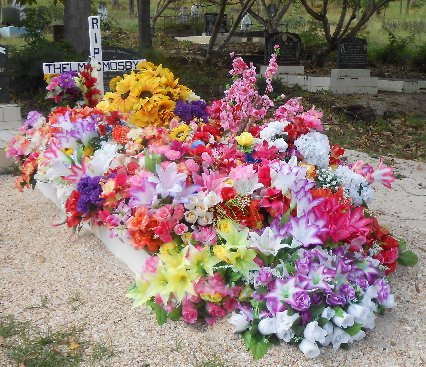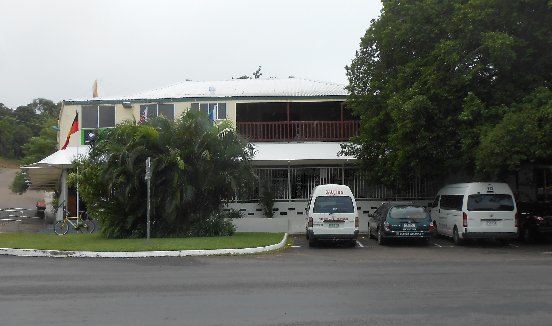After our dusty trip on the Cape York
Peninsula road we are really enjoying being back on the
bitumen. We free camp for the night at a
rest area beside the Annan
River Black
Mountain
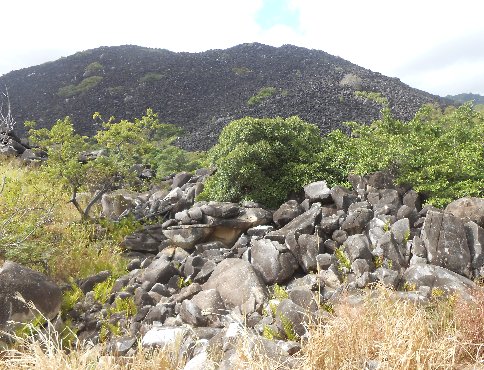 |
| Black Mountain |
It’s an eerie sight with huge granite boulders (some larger
than shipping containers) forming the mountain.
260 million years ago a mass of molten rock solidified deep below the
earth’s surface forming a body of hard granite rock. An unusual jointing pattern occurred in the
granite which led to fracturing. The
fractured granite was gradually exposed as softer surfaces above eroded away. Water penetrated through the network of
fractures and over time rectangular granite blocks were exposed. The solid granite core of the mountain now
lies beneath a layer of jumbled boulders.
There are lots of myths associated with the mountain and stories about
people and animals that ventured into the boulders never to be seen again. It’s not hard to imagine a person or animal
falling into the bottomless crevices between the boulders and being unable to
get out thus giving rise to the scary stories surrounding the mountain. We continue on to Cooktown and visit the
Information Centre which is set in the botanic gardens and houses two
galleries. There are a number of caravan
parks in the Cooktown area but a friendly caravanner has told us that the local
council has just opened up an area in town for self contained caravans/motorhomes
where one can camp for a maximum of two nights at $5 per night. We pay our two night fee of $10 at the
Information Centre and make our way to the rear of Anzac Park
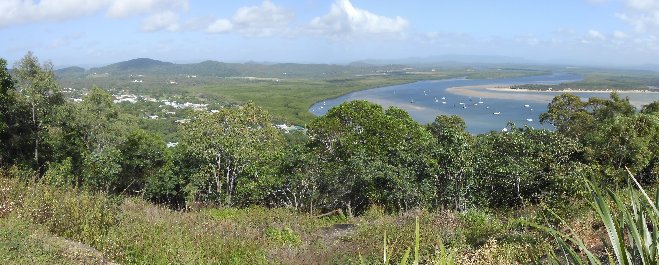 |
| View of Cooktown and the Endeavour River |
 |
| St Mary's Convent - now the James Cook Museum |
The museum is housed in a convent which was built in the
1880’s. It is hard to imagine the hardships
faced by the four young nuns that were brought from Ireland
 |
| Spiral Staircase in St Mary's Convent - Just take a look at the height of the ceilings |
Although the building has a large staircase leading to the
second floor in the entry foyer this spiral staircase was used by the girls
boarding/attending school in the convent.
They were not allowed to use the main stairs. Imagine having to climb up and down this
spiral staircase umpteen times a day. An
annex built onto the back of the convent is devoted entirely to James Cook and
houses an original cannon and anchor from the Endeavour.
 |
| Original cannon and anchor from the Endeavour |
Many items were jettisoned from the ship in 1770 in a
desperate effort to free it from the reef upon which it had run aground. Some of these items were retrieved in the
early 1970’s and the cannon and anchor were donated to the museum. During the time spent here Cook and his crew
interacted with the local aboriginal tribes and this story is also told from
both perspectives – very interesting reading.
An old photo of the tree where the Endeavour was moored to hangs on the
wall
 |
| Photo of mooring tree used by the Endeavour |
and below the photo is the tree trunk itself.
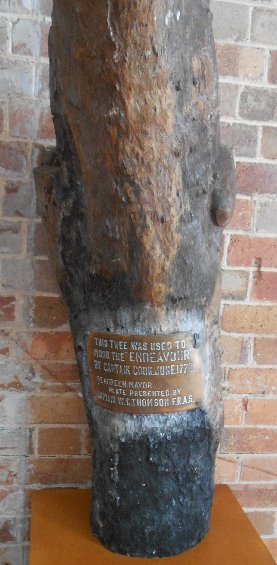 |
| All that is left of the mooring tree |
Obviously the tree has long gone from the landing place
beside the river and this is all that remains.
Other galleries explore the changing face of Cooktown. No prizes as to where the town got its name. The galleries on the first floor, which were
former classrooms and the school hall, house objects from pupils and sisters
who called the convent home. There are
tales from the 1872 Palmer
River Sir Joseph Banks
Garden
The next day we take a walk through town and down to the
river. There are quite a few old
colonial buildings that line the main street and we stop and read the
historical information panels along the way.
 |
| Charlotte Street - Cooktown |
At Cook’s Landing
Place
 |
| Statue of gold miner and Cooks Landing Place in background |
There are lots of fishing boats and yachts moored in the
river and at the wharf some fishermen are trying their luck. We have a leisurely counter lunch at one of
the pubs before making our way back to camp.
In the morning we pack up and take one more walk along the river before
heading out. A statue of James Cook
stands in the park and looks out across the river to the open sea.
 |
| James Cook memorial - Cooktown |
It’s the perfect place for a memorial to this remarkable
man!
